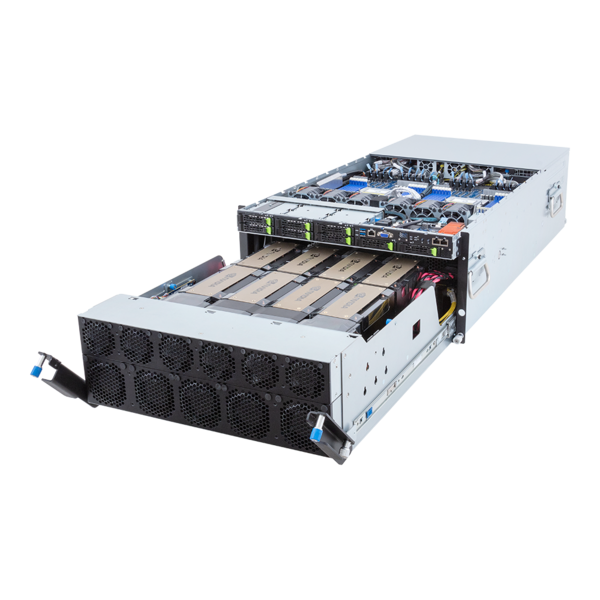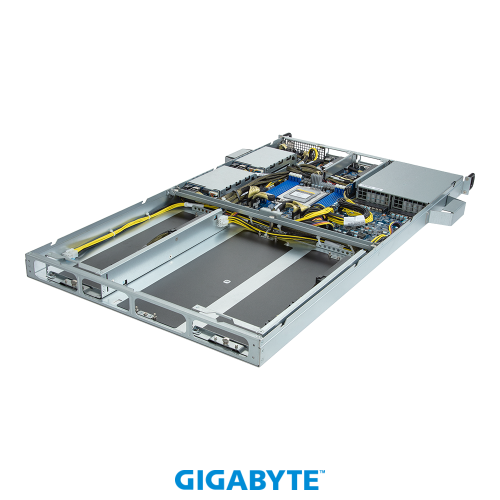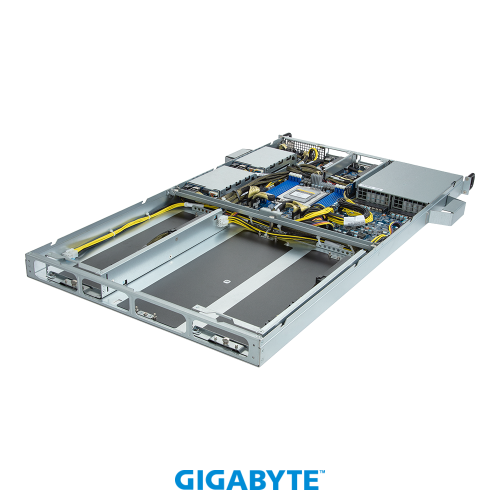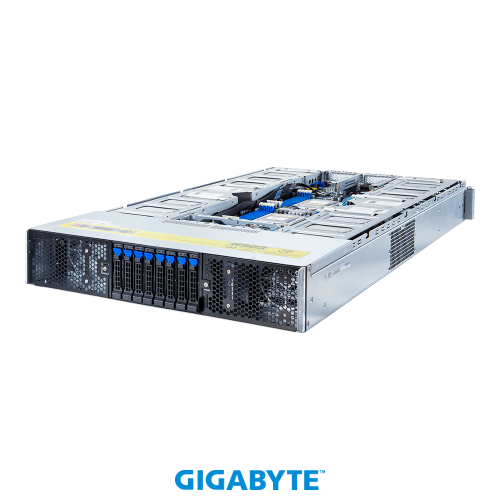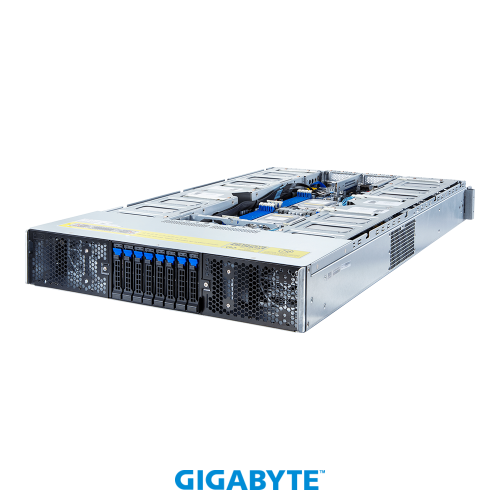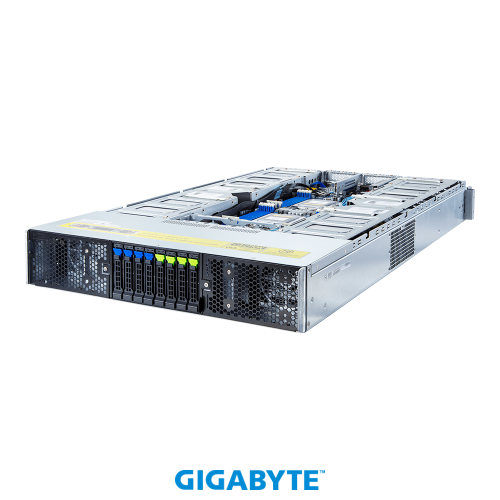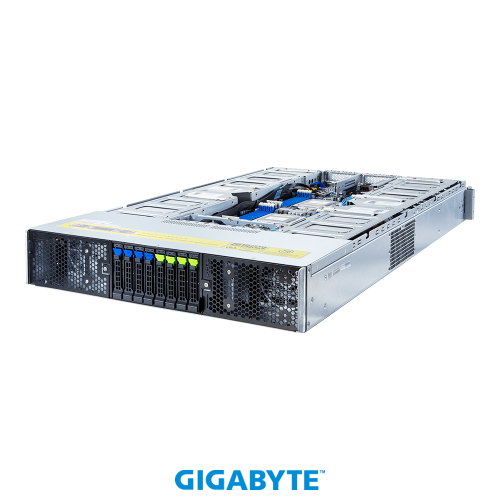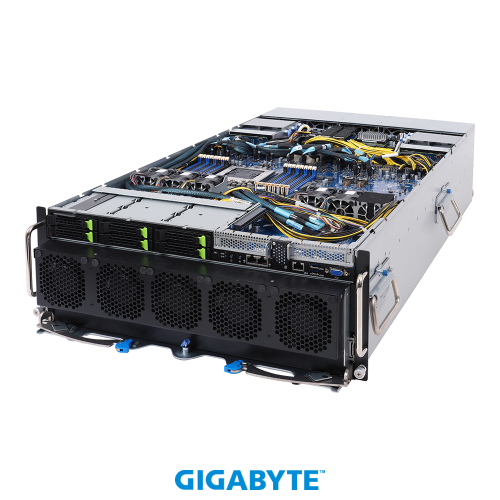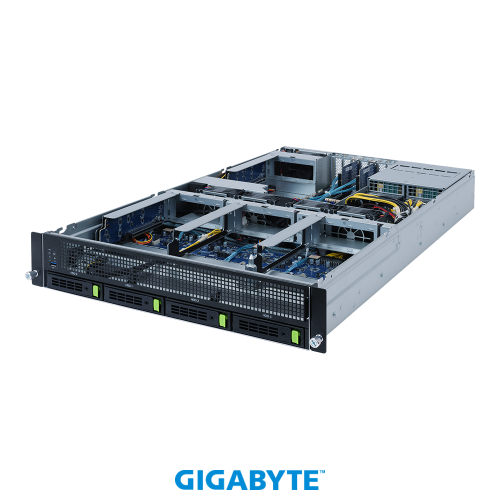GIGABYTE G292-280 (rev. IAP1)
- Single-Phase Immersion Ready Server
- Supports up to 8 x Dual slot Gen4 GPU cards
- 3rd Gen Intel® Xeon® Scalable Processors
- Dual processor, 10nm technology
- 8-Channel RDIMM/LRDIMM DDR4 per processor, 24 x DIMMs
- Dual ROM Architecture
- Intel® C621A Chipset
- 2 x 10Gb/s BASE-T LAN ports (Intel® X710-AT2)
- 1 x Dedicated management port
- 4 x 2.5" Gen4 NVMe/SATA/SAS hot-swappable bays
- 4 x 2.5" SATA/SAS hot-swappable bays
- 8 x FHFL PCIe Gen4 x16 slots for GPUs
- 2 x LP PCIe Gen4 x16 slots for add-on cards
- Dual 3000W 80 PLUS Titanium redundant power supply
GIGABYTE G292-280 (rev. IAP1)
Servers Designed for Single-Phase Immersion Cooling
Unlike air cooling, servers used in single-phase immersion cooling have some special considerations:
- Server installation mechanism
- Chemical phase changes
- Steady flow of coolant in the system
By partnering with the major single-phase immersion cooling suppliers in the market, GIGABYTE's single-phase immersion cooling servers can be installed directly in their off-the-shelf tanks from these partners, eliminating the need for product compatibility testing and customization. These systematic modifications greatly reduce the time for verification and adoption of single-phase immersion cooling technology.
Structural Integrity and Simplified Management
Servers must be installed vertically in the tank, and this lowering or raising of servers is due to an optimized tank design for single-phase immersion cooling. Therefore, the server installed upright needs to have rigid and firm structural integrity to ensure the chassis will not deform. Also, due to the vertical design, the cable routing and maintenance are also different than traditional data centers. Therefore, we re-examine the design and strengthen the server chassis for immersion cooling and reroute the cables. For instance, I/O ports are all arranged on the rear side facing up, and the network cables need to be rerouted to the sides so that maintenance can be quick and easy. Also, to make it more convenient for IT to install or remove a server, a bracket was added to allow hooks to move the server.
.jpg)
Design to Ensure Steady Fluid Flow in the Tank
When a server is submerged in a coolant, an important condition is that the fluid is circulated well, and the warm fluid is pumped out as cooler fluid is pumped in. Only by maintaining a stable coolant flow can the heat absorbed by the fluid be managed, and the system can automatically adjust the coolant flow rate according to the operation needs. To ensure efficient heat removal, the server design for single-phase immersion cooling not only must remove any components that negatively affect the fluid flow in the system, but they also must reduce the dead space in the chassis to avoid heat accumulation. Based on the viscosity of the coolant and the specific heat capacity of the coolant, the heat dissipation rate of the server must be constantly monitored and adjusted to avoid issues . Servers developed for single-phase immersion cooling can significantly reduce unnecessary barriers that users may encounter when adopting new technologies, allowing them to focus on productivity.
Made with Materials Suitable for Various Coolants
Single-phase immersion cooling submerges the server in a cooling fluid that removes heat by directly coming into contact with the heating elements. GIGABYTE had to evaluate how the chemical composition of the coolant may affect the components as well as the effect of the temperature and process on the coolant. Through theory and experimental experience, we perfected the design and will continue to explore materials that are suitable for immersion cooling.
.jpg)
G292-280 Product Overview
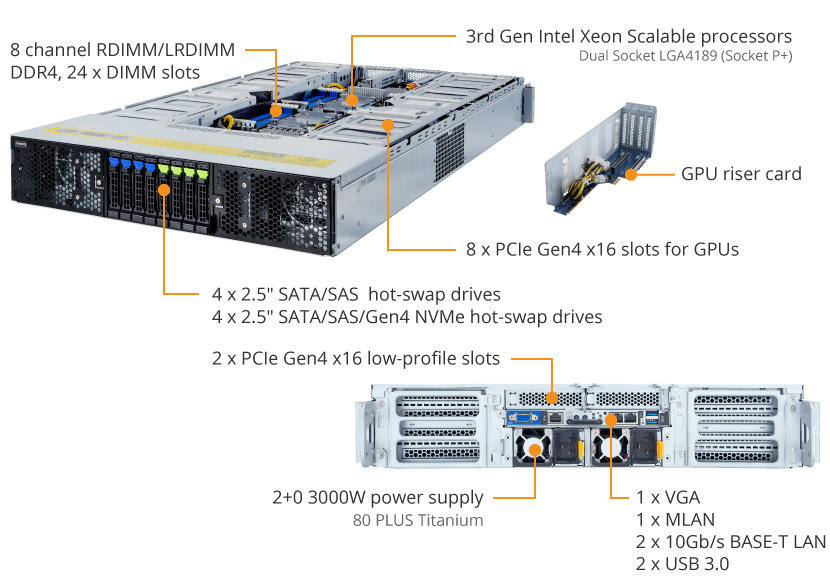
G292-280 System Block Diagram
.png)
Where Compute Reigns
3rd Gen Intel® Xeon® Scalable Processors – “Ice Lake”
GIGABYTE servers and Intel Xeon Scalable Processors deliver incredible 1P/2P performance from edge to data center with incredible gains in I/O throughput and workload demands that need high performing CPUs with large, yet optimized, memory configurations.
.png)
- Enhanced I/0: Support for PCIe 4.0 allows for double the throughput of PCIe 3.0 for fast and large data transfers. Also, 64 lanes per socket with up to 128 lanes in a 2P configuration for fast data transmission from CPU to GPU, accelerator or storage.
- CPU Performance Boost: Now up to 40 cores per socket with greatly improved IPC on Intel’s 10nm architecture while operating CPUs at 105-270W. Also, an additional UPI lane is added for up to 11.2GT/s for a low latency interconnect between CPUs.
- Next Gen Memory: Each processor provides eight memory channels to support 8 or 16 DIMM slots with up to DDR4-3200. There are two sub-clustering modes, Sub NUMA (SNC) and Hemisphere (HEMI), available using balanced memory that results in performance improvements. Additionally, support for Intel Optane PMem 200 series provides two modes for greater memory capacity and data persistence to process large amounts of data faster.
- Next Level Security: New instructions and architecture deliver a high level of cryptographic operations for data privacy and protection. Cryptographic accelerators speed up encryption protocols as well as improvements in software guard extensions and memory encryption are added.
- AI Acceleration: AI inference and training are enhanced with DL Boost Technology for greater business, operational, and security insights. Applications include HPC, AI, and Media & Graphics.
High Availability
Smart Crises Management and Protection (SCMP)
SCMP is a GIGABYTE patented feature which is deployed in servers with non-fully redundant PSU design. With SCMP, in the event of faulty PSU or overheated system, the system will force the CPU into an ultra-low power mode that reduces the power load, which prevents the system from unexpected shutdown and avoids component damage or data loss.

Smart Ride Through (SmaRT)
To prevent server downtime and data loss as a result of loss of AC power, GIGABYTE implements SmaRT in all our server platforms. When such an event occurs, the system will throttle while maintaining availability and reducing power load. Capacitors within the power supply can supply power for 10-20ms, which is enough time to transition to a backup power source for continued operation.

Dual ROM Architecture
If the ROM that stores the BMC and BIOS fails to boot, the system will reboot with the backup BMC and/or BIOS replacing the primary. Once the primary BMC is updated, the ROM of the backup BMC will automatically update the backup through synchronization. For the BIOS, it can be updated based on user's choice of firmware version.

Hardware Security
Optional TPM 2.0 Module
For hardware-based authentication, the passwords, encryption keys, and digital certificates are stored in a TPM module to prevent unwanted users from gaining access to your data. GIGABYTE TPM modules come in either a Serial Peripheral Interface or Low Pin Count bus.

User Friendly
Certified Ready with Software Partners
Being a member of key software alliance partner programs enables GIGABYTE to rapidly develop and validate joint solutions, enabling our customers to modernize their data centers and implement IT infrastructure and application services with speed, agility, and cost optimization.
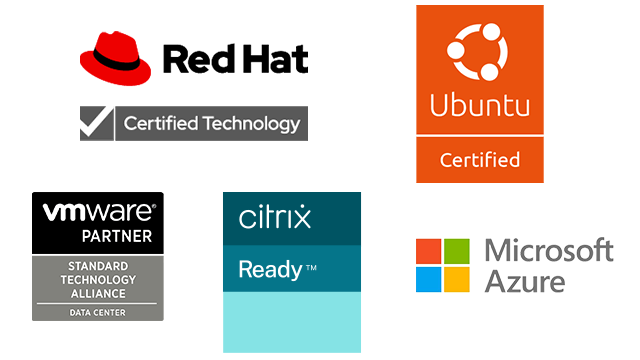
Value-added Management
GIGABYTE offers free-of-charge management applications via a specialized small processor built on the server.
GIGABYTE Management Console
For management and maintenance of a server or a small cluster, users can use the GIGABYTE Management Console, which is pre-installed on each server. Once the servers are running, IT staff can perform real-time health monitoring and management on each server through the browser-based graphical user interface. In addition, the GIGABYTE Management Console also provides:
- Support for standard IPMI specifications that allows users to integrate services into a single platform through an open interface
- Automatic event recording, which can record system behavior 30 seconds before an event occurs, making it easier to determine subsequent actions
- Integrate SAS/SATA/NVMe devices and RAID controller firmware into GIGABYTE Management Console to monitor and control Broadcom® MegaRAID adapters.
GIGABYTE Server Management (GSM)
GSM is a software suite that can manage clusters of servers simultaneously over the internet. GSM can be run on all GIGABYTE servers and has support for Windows and Linux. GSM can be downloaded from GIGABYTE website and complies with IPMI and Redfish standards. GSM includes a complete range of system management functions that includes the following utilities:
- GSM Server: A software program that provides real-time, remote control using a graphical user interface through an administrator’s computer or through a server in the cluster. The software allows ease of maintenance for large clusters of servers.
- GSM CLI: A command-line interface for monitoring and managing remotely.
- GSM Agent: A software program installed on each GIGABYTE server node that retrieves information from each system and devices through the OS, and this software integrates with GSM Server or GSM CLI.
- GSM Mobile: A mobile app for both Android and iOS that provides admins with real-time system information.
- GSM Plugin: An application program interface that allows users to use VMware vCenter for real-time monitoring and management of server clusters.
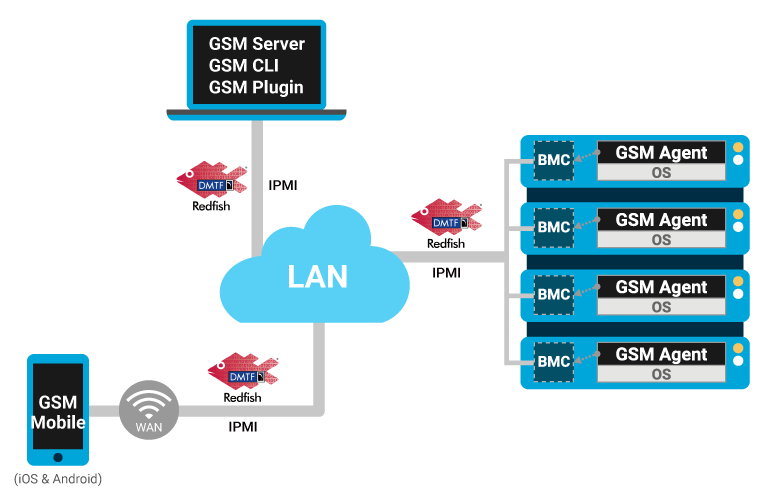

#vdo, #vdo_distributor, #máy_chủ_gigabyte, #server_gigabyte_G292-280-rev-IAP1, #Máy chủ-Gigabyte-G292-280-rev-IAP1, #gigabyte_G292-280-rev-IAP1, #G292-280-rev-IAP1
VDO Distributor - Nhà phân phối hạ tầng Công nghệ thông tin & Viễn thông hàng đầu Việt Nam
Website: vdo.com.vn
1900 0366
- Liên hệ tổng đài hoặc số điện thoại chi nhánh theo khu vực để nhận được tư vấn:
- Hà Nội: 024 7305 6666
- TP.HCM: 028 7308 6666
- Đà Nẵng: 0936300136








